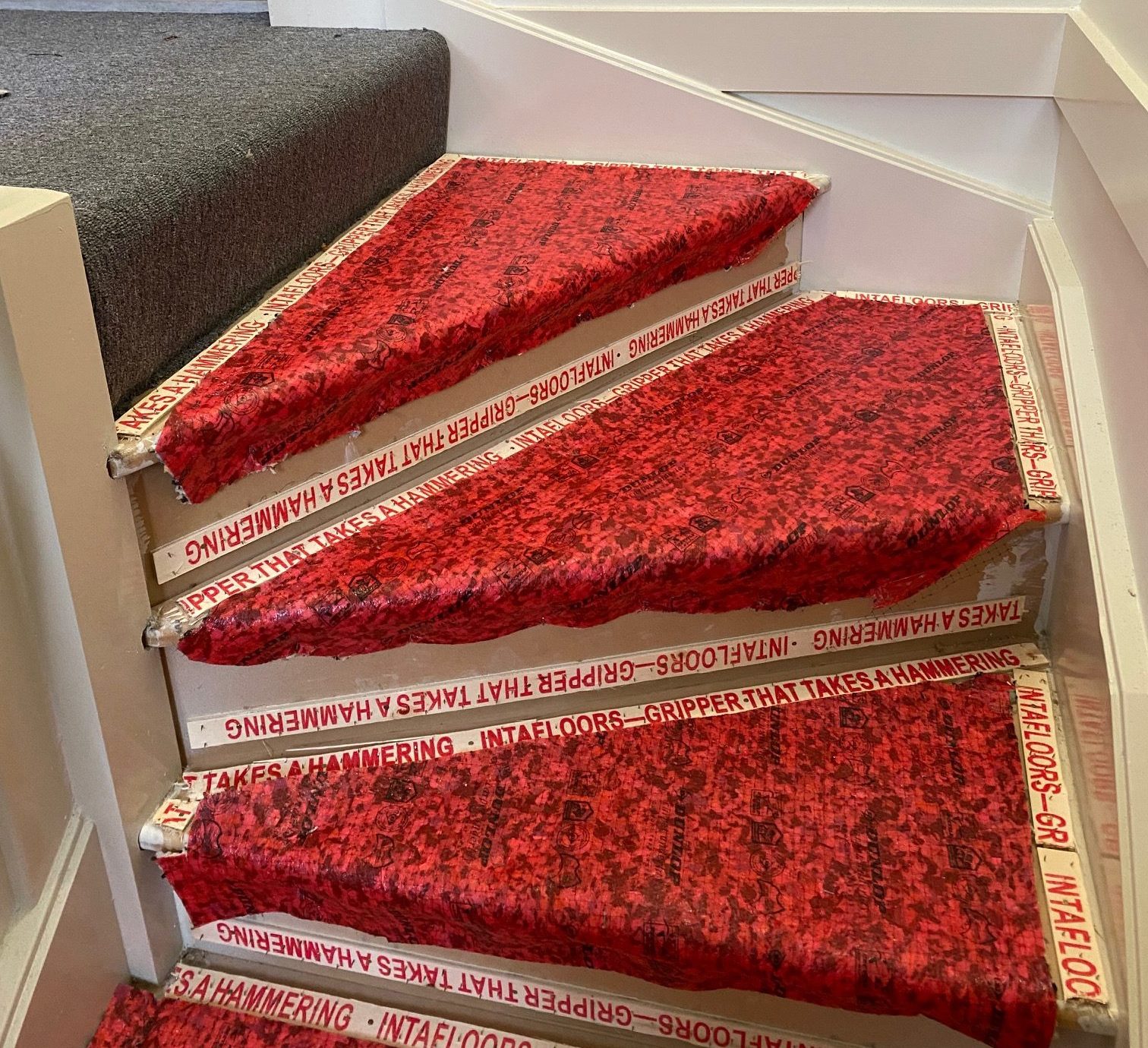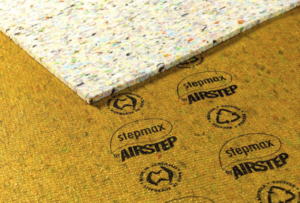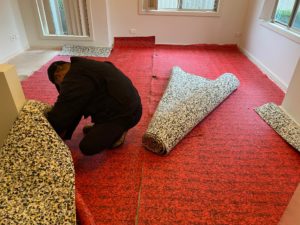

20 Dec Choosing The Right Carpet Underlay Sydney & NSW
Buying a new carpet can be a fun and exciting way to spruce up your home, but don’t forget that every good carpet needs a good carpet underlay. A good quality underlay will make a difference in how your carpet feels beneath your feet and the longevity of your carpet.
Let’s go over what makes a carpet underlay such an important facet of carpeting as a whole.
What is Carpet Underlay?
A carpet underlay, as the name implies, is a thin layer that is placed underneath your carpet. It is typically made out of either rubber, felt or foam. Carpet underlays play many roles, including protecting the underside of your carpet and helping prevent it from sliding around due to foot traffic, thanks to the extra floor grip it adds.
How Thick Should Carpet Underlay Be?
A carpet underlay doesn’t need to be very thick. In fact, they are supposed to be quite thin in comparison to the carpet itself. Many carpet underlays are around 1cm in thickness, though there is some leeway, so you’ll find some that are a little smaller or a little larger.
Thickness affects how comfortable the carpet will feel underfoot. Thicker carpet underlay will make the carpet feel more like a cloud once installed.
However, the dark side of thicker underlay means the new carpet will also flatten quicker in areas that experience more foot traffic.
How necessary is Carpet Underlay?
Strictly speaking, carpet underlays aren’t truly essential, however they are highly beneficial at very low price. There is no denying that a proper carpet underlay adds many benefits that will only improve your carpet comfort and longevity.
Before you make your decision regarding owning a carpet underlay or not, it’s important to know just exactly what one does.
The Benefits of Using a Carpet Underlay
Extra Protection
Many of the subfloors that carpets are installed on are hard or rough, meaning that they can create extra wear and tear on the underside of your carpet over time. This can also end up harming your carpet’s retention, making it harder for it to retain its original flat shape over time.
With the right underlay, your carpet will have protection against any accidental scraping or undersurface rubbing that can harm your carpet’s quality.
More Comfort
Many people think a carpet is all one needs to guarantee underfoot comfort. However, this is not always the case. Depending on the kind of carpet you get and the kind of floor it’s placed on, it may not be enough to give you the soft sensation you’re looking for.
Many rugs will feel too flat and hard when resting on nothing but a hard, cold floor. Your feet will still feel the softness, but there will still be that lingering impact force of meeting a hard surface. In other words, it will just lack fluff and springiness.
A carpet underlay adds that extra layer of softness and comfort that truly brings comfort to the maximum level. If you’re getting one for comfort in a lounge area for relaxation and leisure, you will definitely want a proper carpet underlay.
Temperature Insulation
One of the most practical benefits of using a carpet underlay is insulation. Thermal insulation properties are an important way to keep as much heat in your home as possible. This will be especially important during the cold months of the year. The underlay acts as a sort of shield to help keep heat in your home. This will help keep your house warmer in a more natural way, allowing you to save money on heating.
Noise Reduction
One of the unsung benefits of carpeting in general is noise reduction. Not only is walking on a carpet more pleasant to the touch compared to cold, hard ground, but it is also more pleasant to the ears as well. Your neighbours or housemates will appreciate that.

How Much Does Carpet Underlay Cost in Australia?
Just like with carpets themselves, a carpet underlay’s price is measured per square meter. Thankfully, they are considerably cheaper than the carpets they support. On average, you can expect a carpet underlay to cost $5 to $7.50 per square meter, though this can vary depending on the quality of the underlay you choose.
The quality of a carpet underlay, and therefore its price as well, will be determined by its cushioning, its flooring compatibility, the materials and foam, and ability to protect your carpet.
Different Types of Carpet Underlay
As you might have guessed, not every carpet underlay will pair well with every kind of carpet. This is also true of flooring compatibility. The carpet underlays used in commercial buildings are not typically the same as the ones installed in domestic or residential areas.
Foam
Foam underlays are one of the most popular underlay choices for carpets. They are considered the softest and as a result offer some of the best underfoot comfort and spring-back any underlay has.
Not only are they comfortable but they are also rated highly when it comes to thermal insulation properties, noise reduction and easy installation. Because the foam is so squishy and malleable, it is easy to work with and form into tighter spaces with relative ease.
Felt
Felt is an older option than foam underlay but is still considered a less effective option. However it is somewhat more affordable than foam, making it a good quality underlay choice for people working on a tighter budget.
Felt has solid noise reduction and thermal insulation capabilities, though not quite as good as foam.
Sponge Rubber
If durability is your number one priority, you cannot go wrong with a sponge rubber carpet underlay. This is a fantastic underlay that offers maximum protection to the underside of your carpet.
It might be a little too bouncy feeling for some people, but if you like that kind of puffy sensation then this is the right underlay for you. It also has excellent insulation and noise reduction properties.
Crumb Rubber
Probably the most unique of all the carpet underlays, crumb rubber is special for being made out of recycled materials. This makes it the right underlay for eco-conscious buyers.
It’s also the most packed or “dense” underlay out of the four, making it a perfect choice for rooms that will feature heavy furniture such as large couches, big screen TVs or large bookshelves.


Our carpet inspector Frank is ensuring that the carpet underlay is installed properly at one of our jobs in 2022. There’s a good chance he’ll be doing the on-site inspection and measuring up for you!
Tips on How to Select the Right Carpet Underlay
In order to choose the right underlay for yourself, you first need to figure out a few things about how your carpet setup and installation is going to go.
The very first thing you need to figure out is what kind of carpet you’ll be installing. A thinner carpet ought to be paired with a thicker underlay, and vice versa is true so that you can save a bit of cash. Keep in mind that just like with carpets, thicker means more expensive.
Now considering the flooring. Based on how heating works in your home, you may or may not want an underlay with strong insulation. Floors with underside heating shouldn’t be insulated heavily.
Lastly, think of the room and its furnishings. Thicker underlays that have low desnity can have their retention impaired by heavier furniture. Rooms with lots of heavy objects like living rooms or bedrooms should have thicker underlays. This is true even if the entire house is using the same kind of carpet, in terms of material and thickness.
For any other inquiries about carpet underlays, feel free to get in touch with FloorVenue at any time.




























